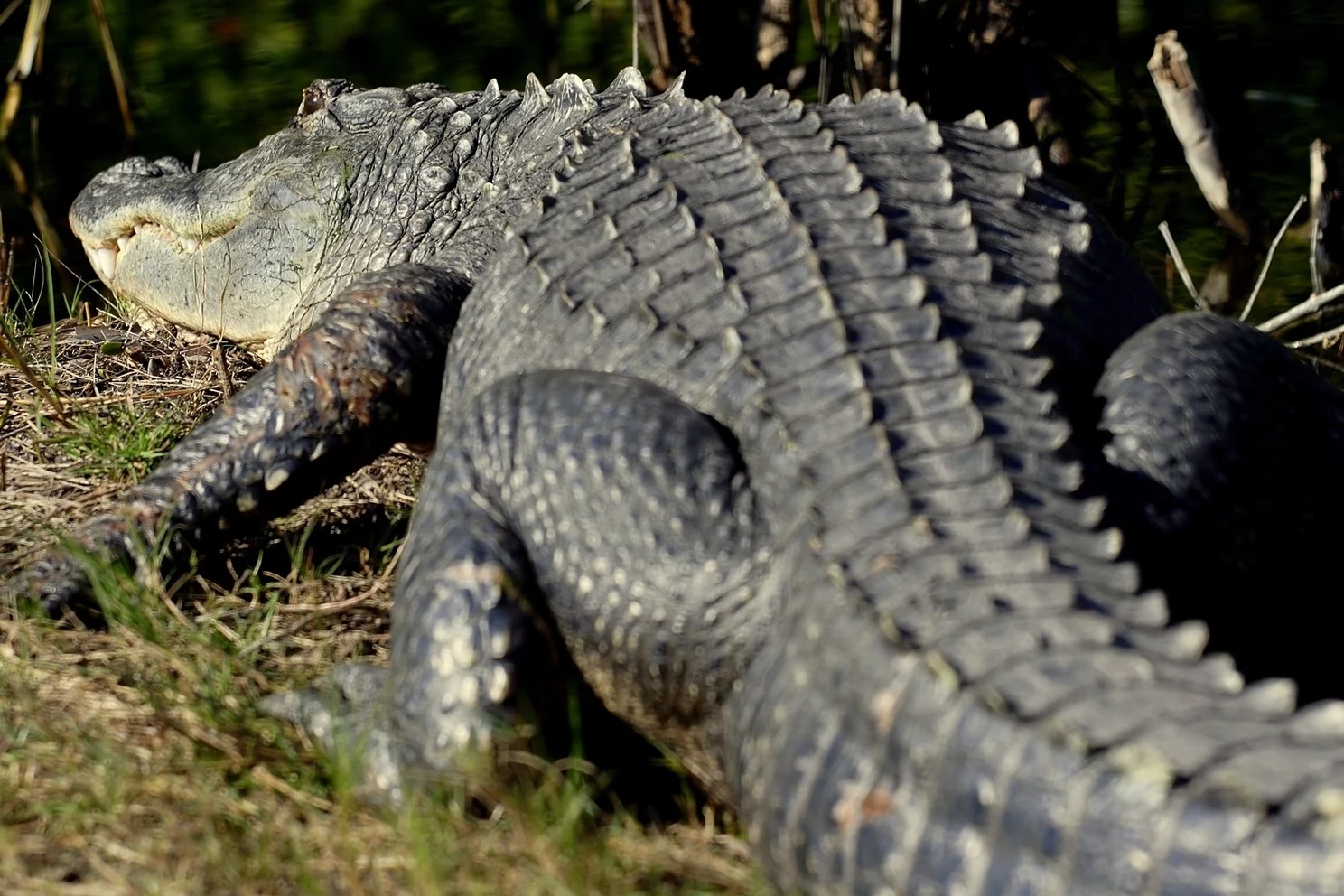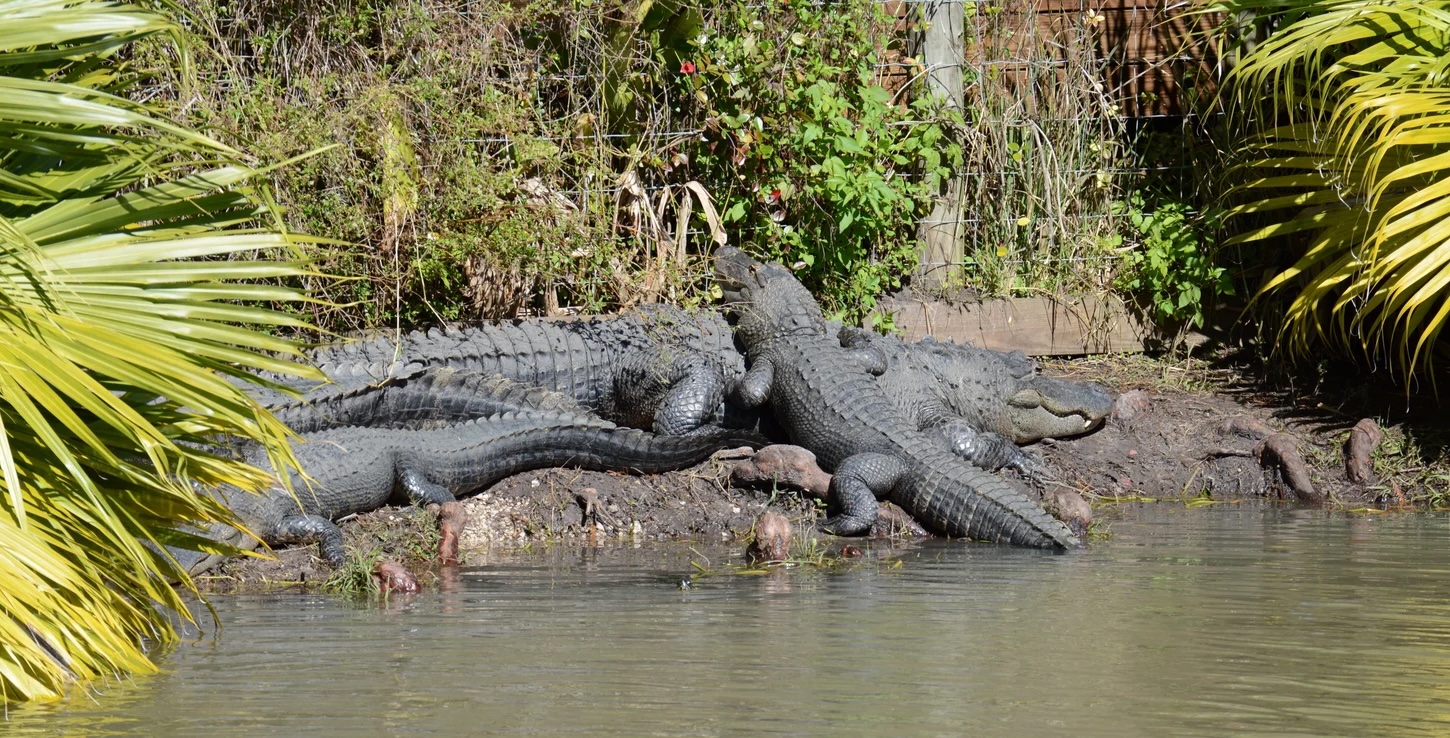Alligators may not be the most tender or snuggly creatures, but they are some of the planet’s most enthralling and awe-inspiring animals. Their intimidating jaws and aquatic abilities make them a must-see for both visitors and locals. Embarking on a Florida Everglades airboat tour is an outstanding way to witness these alligators; it’s not the exclusive attraction at Wild Florida. The Gator Pond at their Gator Park in Florida is a sanctuary for over 100 rescued and indigenous alligators.
Navigating through the Gator Park, guests will encounter the Croc Squad. They are experts who are passionate about educating others on these exceptional creatures. This blog brings to light five facts about alligators that often astonish guests from Central Florida.

They are opportunistic hunters.
Alligators typically prey on animals that are readily available and commonly found in the wild. Unlike other predators like lions or wolves, they are not active hunters. Instead, they patiently await the perfect moment to strike. In their natural habitat, such as the headwaters of the Florida Everglades, their diet consists of fish, snakes, turtles, and smaller mammals. However, if the opportunity arises, they’re not averse to attacking larger prey, such as a cow.
The temperature of their nest determines an alligator’s gender during incubation.
Florida’s female alligators lay about 35 to 90 eggs from late June to early July, shielding them with vegetation for warmth. The eggs hatch in roughly 65 days. Notably, the nest’s temperature dictates the gender. Offspring are male when the temperature is above 93 degrees Fahrenheit, and female when it is below 86 degrees Fahrenheit. Temperatures in between can result in both genders.
Alligators are very different from crocodiles.
Alligators inhabit the southeastern United States and eastern China. Crocodiles are more widespread, living in Africa, Australia, Southeastern Asia, and parts of the Americas. South Florida is unique as it’s the only place where both species coexist. One can distinguish them by their snouts. Alligators have a wider, U-shaped snout, whereas crocodiles sport a narrower, V-shaped one. Also, alligators have a darker, blackish-grey color compared to the lighter, olive-green, or brown crocodiles.

Run straight away from an alligator, not zigzag.
Many believe running in a zigzag pattern can help you escape an alligator. However, this is a myth. Alligators bite by swinging their mouth to the left or right, as they are almost blind when an object is straight in front of their nose. Running in a zigzag pattern might make it easier for them to spot you.
An alligator’s bite is one of the strongest in the animal kingdom.
Did you know that an alligator’s jaws are incredibly powerful? Greg Erickson, a biology professor at Florida State University, researched the strength of an alligator’s bite. He found that it is one of the strongest in the animal kingdom. According to Erickson, if you were trapped in an alligator’s jaws and tried to escape, it would be like attempting to lift a pickup truck yourself! American alligators have the third strongest bite force of any animal. Only the Salt Water and Nile crocodiles have a stronger bite. Pretty impressive, don’t you think?
Wild Florida offers a unique opportunity to observe these alligators in their natural environment, either at the Gator Park or on an airboat tour. Remember, an airboat ride also grants you access to the Gator Park. This provides an extended experience with these fascinating creatures. And before you leave, take advantage of the chance to visit Wild Florida’s Drive-thru Safari Park for an up-close encounter with a variety of animals, making it an adventure-packed day.
